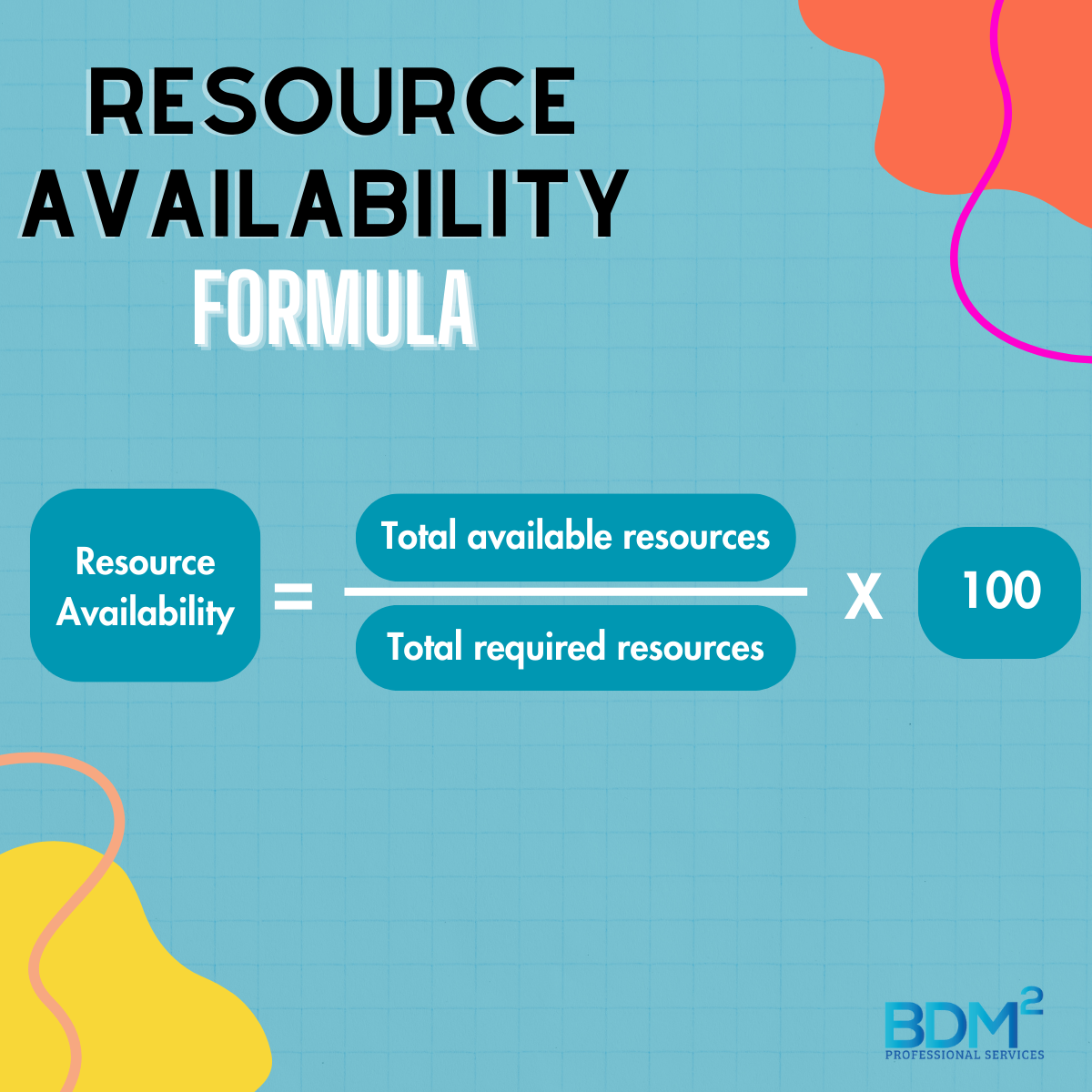
Resource availability is the backbone of successful project management. It encompasses the capacity of resources required to execute tasks within a project. In this article, we’ll delve into what resource availability entails, why it’s crucial, and how to effectively utilize the resource availability formula to optimize project outcomes.
Understanding Resource Availability:
Resource availability refers to the accessibility and readiness of various resources needed to accomplish project objectives. These resources can include human resources (team members), equipment, finances, materials, and time. In essence, it’s about having the right resources in the right quantities at the right time to ensure project tasks can be completed efficiently.
Importance of Resource Availability:
Proper resource availability ensures that projects stay on track, meet deadlines, and achieve goals effectively. Without adequate resources, projects may encounter delays, budget overruns, and compromised quality. Moreover, resource availability directly impacts team productivity, morale, and overall project success.
Utilizing the Resource Availability Formula:
The resource availability formula is a fundamental tool for project managers to assess and plan resource allocation accurately. It calculates the available capacity of resources based on factors such as resource availability per unit time and project duration. The formula is typically expressed as:

Here’s how to properly use the resource availability formula:
- Identify Resource Types: Begin by listing all the resources required for your project, including personnel, equipment, materials, and any other relevant resources.
- Determine Available Work Hours: Assess the availability of each resource over the project duration. Consider factors such as part-time availability, holidays, and other non-working days.
- Calculate Required Work Hours: Estimate the total number of work hours needed for each resource to complete their assigned tasks throughout the project.
- Apply the Formula: Plug the values of total available work hours and total required work hours into the resource availability formula to calculate the resource availability percentage.
- Interpret Results: A resource availability percentage of 100% or higher indicates sufficient resources to meet project demands. Anything below 100% suggests potential resource constraints that require mitigation strategies.
Best Practices for Resource Management:
Regularly Monitor Resource Availability: Continuously track resource availability throughout the project lifecycle and adjust resource allocation as needed to mitigate any shortages or overages.
Prioritize Resource Allocation: Allocate resources based on project priorities, critical path activities, and resource dependencies to optimize efficiency and minimize bottlenecks.
Utilize Resource Management Tools: Leverage project management software and tools to streamline resource allocation, scheduling, and tracking processes, enhancing overall project visibility and control.
Conclusion:
Resource availability is a cornerstone of effective project management, ensuring that projects have the necessary resources to succeed. By understanding and properly utilizing the resource availability formula, project managers can optimize resource allocation, mitigate risks, and enhance project outcomes. Mastering resource availability is essential for navigating the complexities of project management and delivering successful projects consistently.
If you’re unsure about the readiness of your resources for your projects or recognize the need for assistance to ensure project success, give us a call at 941.866.6277 or schedule a consultation here.
